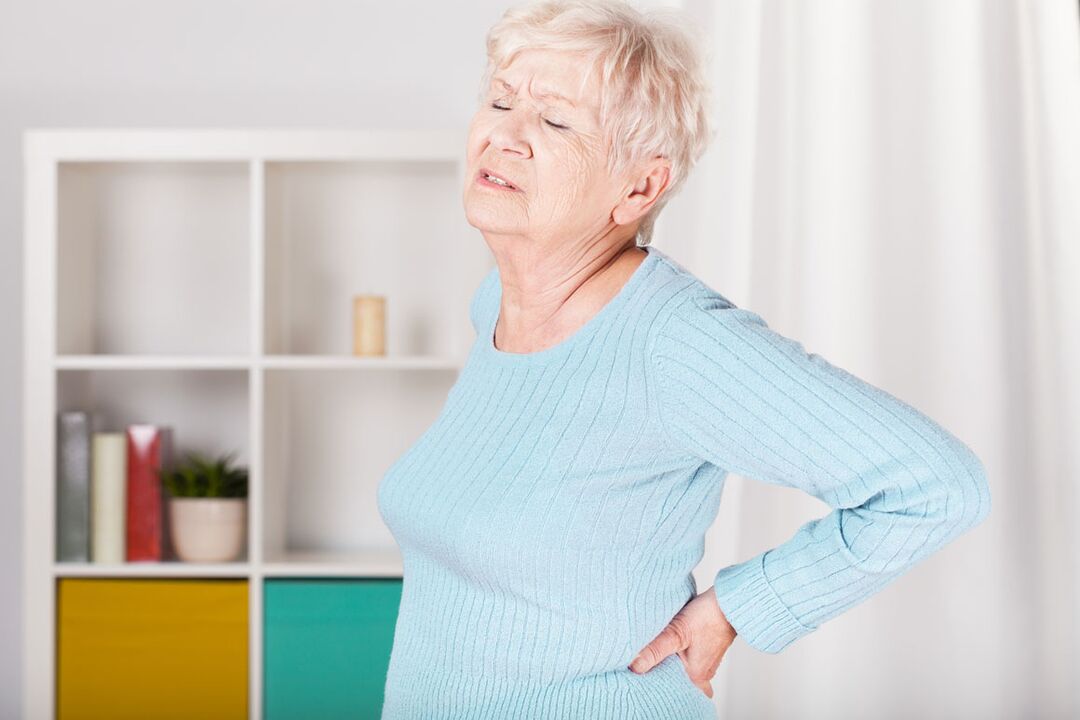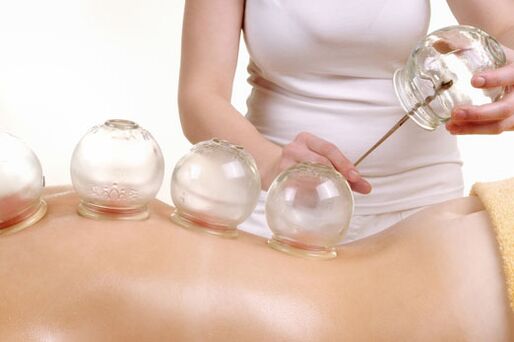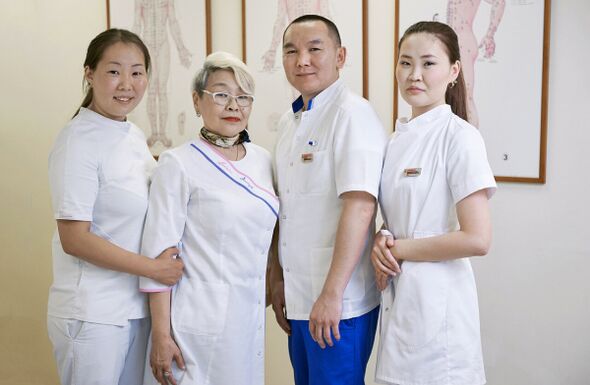Each of us experienced back pain at least once - from mild malaise to thoracombalgia (lower back pain, in the thoracic region). Periodically disturbed lower back discomfort. Doing it can be one of the manifestations of many types of diseases.

The most common cause of pain is osteochondrosis of the spine, which occurs in most people after 40-40 years. However, it does not explain the severity and duration of the pain. To understand the nature of the diseasesTherefore, it is necessary to understand in detail about the problem and its origin.
reason
There are many answers to the question of why your back hurts. The main mechanisms of the pain syndrome are dystrophic and degenerative changes in the intervertebral discs. Exertion, depression of joints and compression of the nerve endings of the spine increase symptoms.
Let's look at the various causes of low back pain:
- Primary diseases of the spine: intervertebral hernias, osteochondrosis, spondylosis, kyphosis, scoliosis, arthritis.
- Injuries, bruises, fractures, tumors. They are known as secondary causes of pain syndrome.
- heart disease.
- Nephrological: sand or kidney stones.
- In women, pain may additionally appear in gynecological problems and during menstruation.
Critical Factors for Pain Syndrome:
- sedentary lifestyle, sedentary work. This item includes a long stay behind the wheel of a car or computer monitor;
- overweight, obesity;
- Pregnancy involves a combination of weak back muscles and weight gain;
- excessive physical activity (in everyday life or in the gym);
- Hypothermia of the body.
Possible Diseases
The nature of the pain depends directly on the disease that provoked the symptom. In primary pathology (arthritis, intervertebral hernias), lower back pain causes pain: pain increases with changes in body condition. Or decreases. It is accompanied by a feeling of tingling, burning sensation, alternately numbness of the lower extremities. Dull pain observed with lumbosacral radiculitis is felt not only in the back, but also in the buttocks, legs and thighs. is.
Diseases of the internal organs (angina pectoris, pyelonephritis)are characterized by a more pronounced and prolonged nature of pain, persisting after rest or after a change in body condition. Therefore, with gynecological problems, the lower abdomen is additionally concerned, and with cardiac deformity, shortness of breath and lack of air are noted.
Important! Specific pain in the lumbar region in combination with high fever may be manifestations of emergency conditions - kidney or gallstones, unstable angina pectoris.
Enlarged OsteochondrosisSharp, shooting pain - manifested by lumbago ("lumbago"), pelvis in the leg, cough or pelvis when there is high speed. Characteristic features of herniated disc are: zxp>
- Bending is impossible without first squatting;
- Hard to lift without support (chair, knee);
- In the prone position, the patient is forced to put a pillow.
Inflammatory processes (myositis, radiculitis)proceed with pain and inability to perform primary actions, as the simplest movements are constrained by the pain syndrome.
Fractures and dislocationsAcute, growing pain, accompanied by swelling of the damaged area. The skin color above the painful surface turns blue or red (depending on the nature of the injury).
how to get rid of low back pain
Excessive physical activity or prolonged exposure to drafts in the near future will cause backache. Let's take a closer look at simple and quick help for familiar, annoying pain.
If the pain syndrome itself appears after hypothermia or inflammation of the roots of the spinal cord (sciatica), a warm bath will help. Any physical activity is contraindicated after bathing procedures. Pain preventive ointment warming, decongestantAnd provide anti-inflammatory effects.
Pain in osteochondrosis can be reduced with anti-inflammatory ointments and gels, as well as special exercises to relieve intervertebral discs and muscle corsets.
Bruises or sprains increase inflammation. A dry cold compress (ice from a freezer wrapped in a cloth) will help reduce or prevent it. Every two for two days to give painful attention for half an hourApply hours.
It is worth remembering that only a specialist can correctly diagnose the cause of pain and create a treatment program. Therefore, we recommend that if you experience dangerous symptoms, consult our clinicSign up for
treatment and prevention of back pain
Western medicine is represented by three main therapeutic areas:

- medicated;
- non-drug;
- Surgical.
Drug treatment includes external application of pills and ointments, gels, patches. Main groups of medicines:
- non-steroidal anti-inflammatory - NSAIDs (relieving pain, inflammation);
- heparin ointment (relieve dysfunction, improve venous outflow);
- papaverine ointment (relieve pain, relieve pain cramps, thin the blood vessels);
- chondroprotectors (restore cartilage tissue);
- Relaxing the muscles (eliminate muscle tension).
For the prevention of chronic conditions, a course of injection is prescribed. The course of treatment for acute pain almost always involves injections of B vitamins. They improve metabolic processes and restoration of nerve fibers, stabilize central and peripheral nervous system work, and restore impulse transmission. Analgesics are added to the drug's composition to enhance the therapeutic effect. Vitamin NSAIDsAre combined with.
In acute conditions, physicians intervene medically. Mostly they are used for diseases of the spine and joints. Doctors inject both anti-inflammatory drugs and adrenal hormones. Prednisolone or dexamethasone (the main representative of the group) affectedAnesthetize the area, relieve inflammation.
Non-drug therapy includes physiotherapy - massage, cold treatment (cryotherapy), heating the affected areas. Physiotherapy is usually prescribed in subacute conditions or demonetization.
Surgical treatment. Surgical intervention is used in extreme cases - for malignant tumors, spinal cord destruction, compression fractures. Surgical treatment of herniated discs causes professional controversy: the positive effect of the operation is often itselfDoes not justify, and the risk of complications is very high.
Preventive Measures:
- Exercise in the morning, be sure to include exercises to pull the lower back muscles.
- Proper nutrition. Fried, salty, starchy foods, alcohol should be excluded - everything that contributes to the development of gastrointestinal diseases. Adding fiber, vitamins to the diet, meat and fish boiled or in the oven. Ripening is necessary. To improve blood circulation and inter-fluid production, it is recommended to drink 1. 5 liters of water (in the absence of contraindications).
- Monitor your posture.
- Walking or exercising periodically in case of sedentary work.
- It is advisable to sleep on orthopedic pillows and mattresses.
treatment in Tibetan medical clinic
Tibetan traditional medicine considers lumbar as a violation of the three formations. Indignant dosha bile spasm in the back muscles. Excited mucus leads to endocrinological problems, metabolic disorders. Excess of constitution wind (nervous systemResponsible for) increases the disagreement of the other two formations.

Eastern doctors not only help to eliminate the symptoms, but to understand the cause of the disease and cope with it.
At the clinic, you will not be offered to "stop" the problem with pills, hormones and injections. After diagnosing the disease using ancient oriental techniques, the patient will receive a personalized treatment plan. Original sample of treatments used by doctors:
- Improvement of nutrition and mental comfort, restoration of emotional background.
- Herbal medicine. Herbal and herbal preparations will deal with the problem from the inside. Multicomponent Tibetan preparations "wind", "mud", "bile" restore balance between the three formations. Thumb collections not only prevent symptoms, butHave a healing effect on the entire body as a whole.
- Acupuncture. The effect of needles on bioactive points relieves vascular and muscle spasms, increasing blood flow to damaged areas of the back.
- Acupressure Massage. The expert presses his fingers on the points of the internal organ, working with chronic diseases of the internal organs.
- Cupping massage (vacuum) improves the microcirculation not only of painful areas but also of the whole organism.
- Moxotherapy. Wormwood cigar restores the balance of three doshas, integrity of the entire system. Stone therapy. Cold and hot stones neutralize inflammation and inflammation.
- Tsubotherapy is one of the acupuncture options using metal balls. Tiny balls are applied with plaster at bioactive points for up to 2 weeks.
- Hirudotherapy - Cleansing a slagged body with leeches, normalizing the body's metabolic processes.
The effectiveness of Tibetan methods in the treatment of diseases of the musculoskeletal system has been proven and confirmed by our patients.



















































